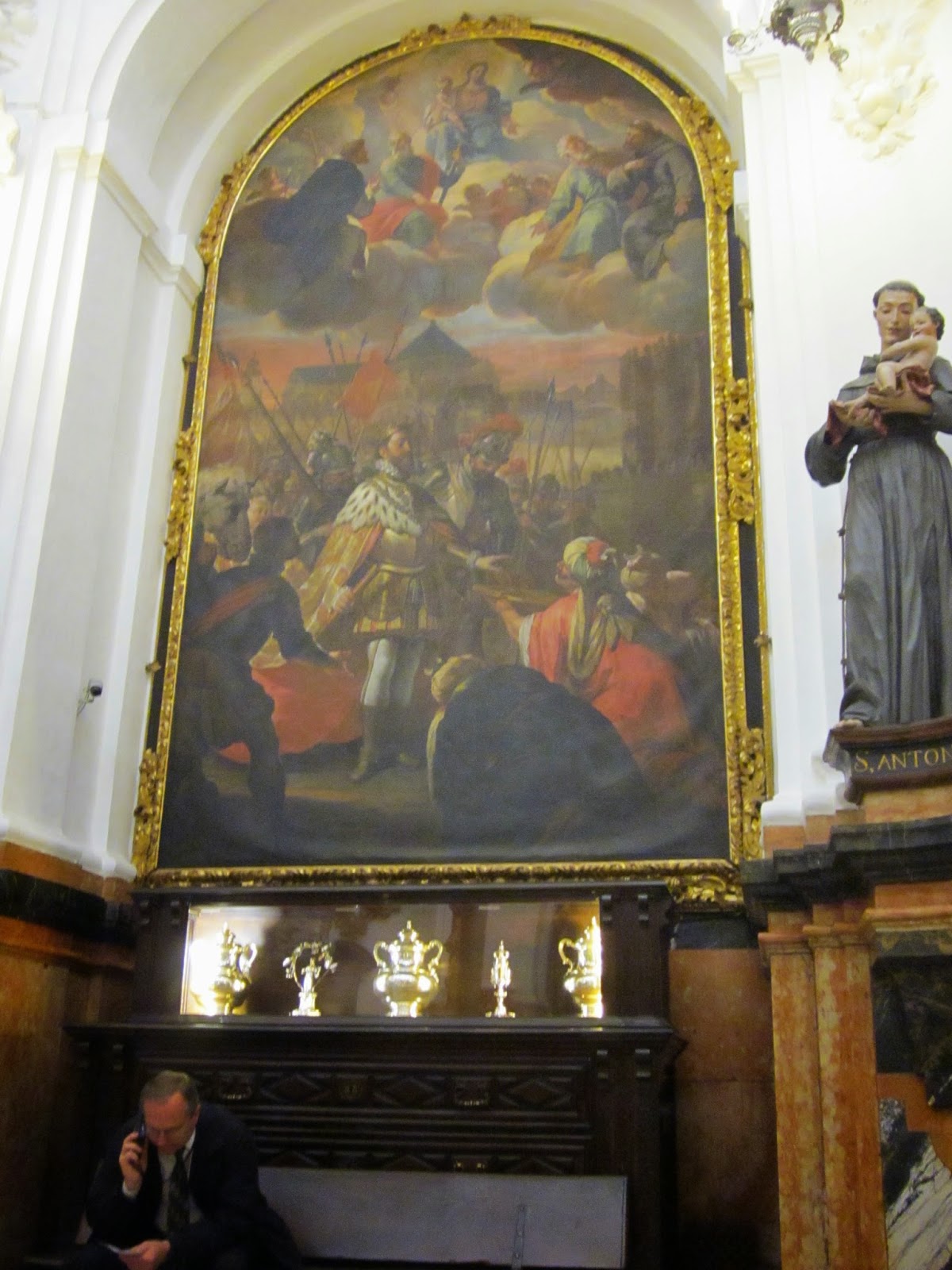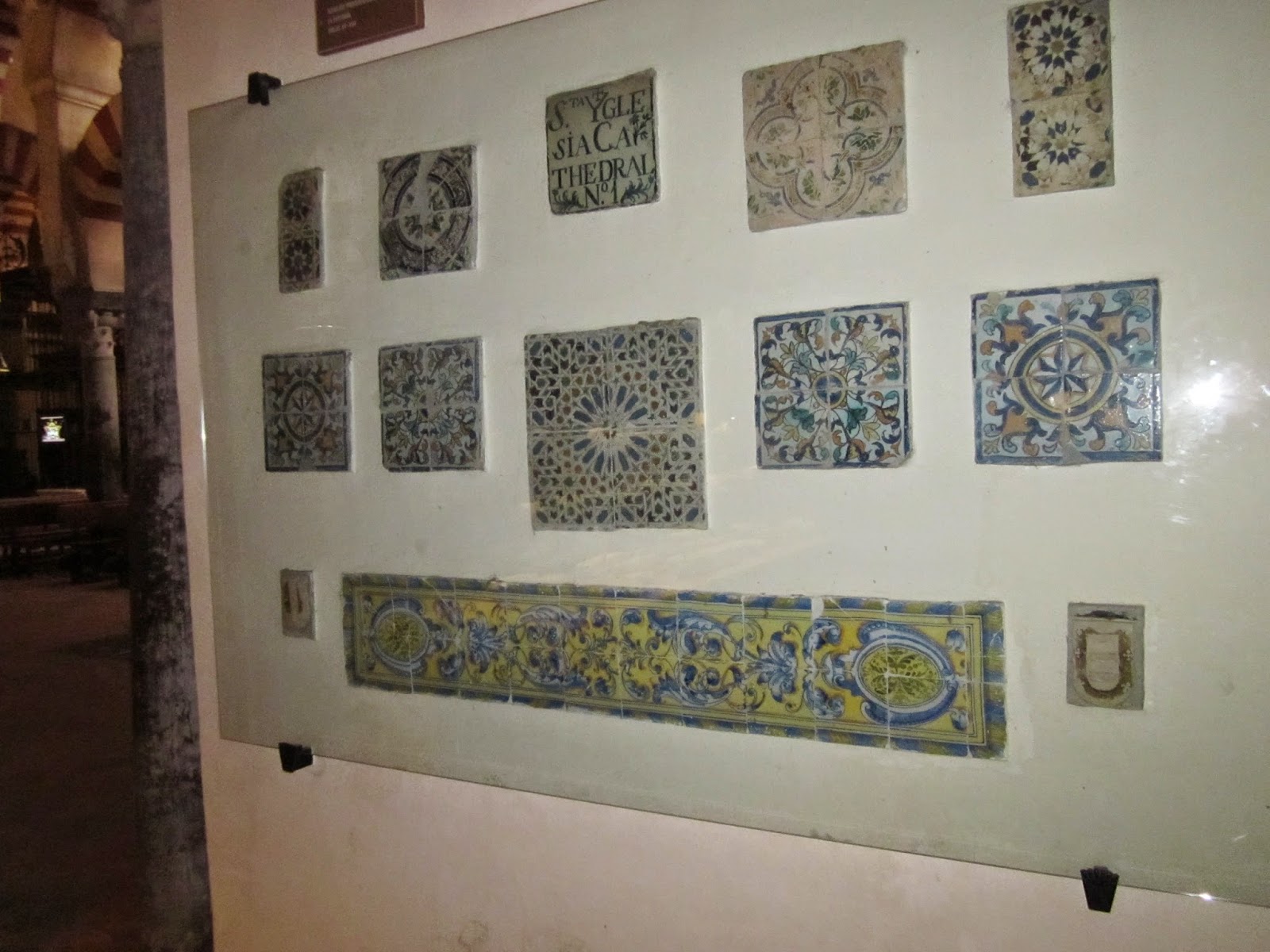In the middle of December we had another Senior Missionary ¨Conference¨, this time in Córdoba. The plan was to meet at the Mezquita, so the Coombs and I set off with the Frosts behind us, trusting in Tim, our faithful TomTom to get us to the Mezquita (Mosque)/Cathedral in that beautiful city.
Sure enough he got us there, but we could NOT find the public parking that was supposed to be there. Finally Hermana Coombs got out and hired a taxi to take her to the proper entrance, our two cars trailing behind. We had to go back over the bridge, then around to another bridge to get to the right side. And it only cost a few euros.
This time everyone (except of course my companion, Hermana Chantrill, who is just not into travel) made it, and it was GREAT to see all the other ¨seniors¨! (I keep putting it in quotations, because we are NOT old!)
Well, we met up with a couple of other couples at the parking garage and headed for the Mezquita. Above is a picture of part of the wall which surrounded the whole complex. It took a bit of wandering, but we finally found the entrance into the grounds (I'll show you a picture of the beautiful grounds that featured orange trees later), and entered the Mezquita itself. Just inside the entrance is some plexiglass on the ground that lets you see into what I'm pretty sure was the mosque built on the site before the magnificent building that is there now. It has quite a religious history. First there was a Roman temple dedicated to Janus built there. Then a Visigothic cathedral. When the area was converted to Islam the building was divided between the Muslims and Christians (around 710). Then in 784 the emir of Córdobo bought the Christian half and constructed a magnificent mosque (mezquita) which took over 250 years to finish and was remodeled many times later. At one point it held an arm bone of the prophet Mohammad and an original copy of the Koran and Muslims would come on pilgrimage. Then in 1236 King Ferdinand switched the area back to Christianity, and the mezquita was consecrated, dedicated to the Virgin Mary, and used as it was. Then in 1523 the Córdoba church leaders asked King Charles V if they could build their own church inside. So a huge Renaissance cathedral was built right in the middle of the huge mosque!
When Charles came to see it, legend has it that he said, ¨You have built what you or others might have built anywhere, but you have destroyed something that was unique in the world¨. A bit melodramatic, although they did take out over 400 of the beautiful columns (856 are still there though). The ¨Forest of Columns¨ was really beautiful and many were ¨repurposed¨ from the Roman temple that had been there before, and from other Roman ruins. They are made of jasper, onyx, marble, and granite and are topped with piers and 2 tiers of the red and white striped arches.
This was a new architectural design that let the ceiling be much higher than previous buildings of that type. It was quite magnificent and HUGE! Once again I spent much of my time looking up. Each area had it´s own ceiling design, and they were all very beautiful. This ceiling over the cathedral area.
There were a whole bunch (37) of ¨capillas¨ (little chapels) around the outside walls. There were all kinds of beautiful pieces like this in the capillas.
One good thing the cathedral conversion may have done was to preserve the whole building when the Spanish Inquisition came along and all the Jews and Muslims had to convert, leave, or die.
There were some rooms where they kept the treasures, and this huge piece was in the middle of one of those rooms.
Art work, sculpture, and more treasures.
This was in the treasure room. I wish I could remember what exactly it was. I think it was someone's crypt? Not sure. It looks like it may have been commemorating the plague, but that's just my fancy.
A display of the tile work that has been found here.
This is the Capella Real (Royal Chapel) which was a room just stuck in the middle of the mosque (along with some others and the main cathedral). It had really cool stuco work, and was the burial chapel of Ferdinand IV and Alfonso XI.
I love the scalloping!
Muslims didn't believe in making any artwork that depicted living creatures that might be worshiped, including people and animals. Here you can see the intricate geometric and floral patterns and Arabic script (usually verses of the Koran) that they used in their decorations. Beautiful!
There was a lot of statuary of various sizes.
And other works of art.
This is a misc. monument in Córdoba we walked by on our way out that I thought was kind of cool, and I had room for it here :). I'll write more about our visit next time. Another great trip in Spain!















Hi Kim. What a wonderful experience that you were able to go and see this. I enjoyed reading about it.
ReplyDeleteAnn Cowley